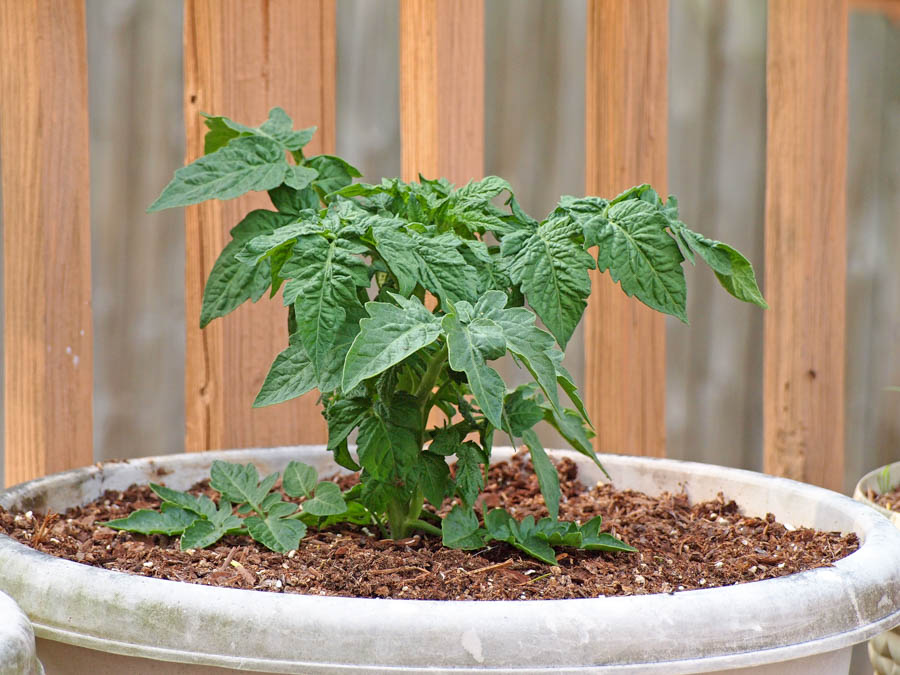Container Tomatoes: Variety Recommendations and Growing Needs

GardenZeus receives commissions for purchases made through links in this post. These commissions are earned without additional cost to you.
Tomatoes can make excellent container plants, provided that a few important criteria are met.
Choice of Type and Variety. Most cherry tomato varieties that are otherwise suited to your growing conditions will produce abundantly in containers in your zone. Many larger tomatoes will also do well in sizable pots or containers. For heirloom, indeterminate cherry varieties in containers, try Yellow Pear or Black Plum. For smaller containers try mini and grape determinate varieties such as Tiny Tim.
Nutritional Needs. Tomatoes are heavy feeders. Provide ample compost and nutrients to tomatoes being grown in containers, especially indeterminate varieties that produce larger fruit.
Size of Containers. GardenZeus recommends 5-gallon nursery pots with at least 12-inch depth as a minimum size for most tomato varieties, with larger pots generally being better. Many indeterminate plum and slicing tomatoes perform reasonably well in larger containers. Vigorous indeterminate heirloom tomatoes, and most indeterminate hybrids, are best grown in the ground, in raised beds, or in very large containers, such as 24-inch planting boxes or trash-can-equivalent sizes. Note than trash cans and many containers you might consider using as planters for tomatoes, particularly metal containers and cans, may contain toxic metals that can be absorbed by plants so caution is needed when using found or adopted containers, particularly when growing food.
Containers allow you to move plants to follow seasonal changes in sun, to shaded areas during hot summers to warmer areas during winter, and to protected areas when necessary in response to winds or other environmental factors.
Watering Needs. Container plants are more sensitive to drying soil, especially in warm weather, which can reduce harvest quality and quantity, shorten the harvest period, and encourage problems . Soils may dry rapidly in containers, so monitoring and regular watering vegetables in containers is important. Pay close attention to soil moisture and frequency of irrigation, and be sure to water sufficiently to avoid any signs of wilting.
Tomatoes are susceptible to various problems that result from drying soil or from extreme fluctuation in soil moisture. Fruits may crack or develop blossom end rot easily when tomatoes are grown in containers, especially during warm-to-hot weather, so pay extra attention to irrigation or manual watering when growing tomatoes in containers. If you know you may have difficulty maintaining consistent soil moisture, consider using self-watering containers, which have trays or reservoirs of water under pots, and a wicking mechanism, such as cloth or soil tubes. These can be purchased or made yourself.
Soil needs. GardenZeus recommends a soil mix of at least 2/3 sand and topsoil when growing vegetables in containers, with some organic matter or compost. Potting soils with high proportions of organic matter tend to shrink and collapse over the course of a growing season as soil microbes and macro organisms like insects digest or decompose the organic matter, which results in falling soil levels that may cause stress to plants.
For further information about growing vegetables in containers, see GardenZeus Tips for Container Vegetable Gardening For further information about growing tomatoes, go to GardenZeus and enter your zip code, then go to plants and then tomato.
Other articles of interest:
The GardenZeus Guide to Starting Tomato Seeds
The GardenZeus Guide to Choosing the Best Tomato Varieties for Your Garden
